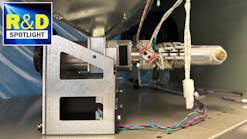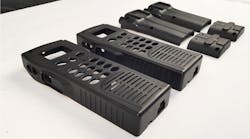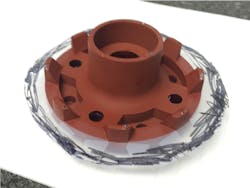Urethane casting provides end-use, rigid or flexible plastic parts with production-level quality. Built without expensive and time-consuming hard tooling, Xometry’s urethane-casting process uses a 3D-printed master pattern and silicone molds to deliver high-quality, short-run parts up to 30 in. long.
When producing a part with urethane casting, a master should be printed in SLA (stereolithography) or PolyJet 3D (PJ3D). Similar precautions to designing parts for SLA and PJ3D should be taken when designing a part for urethane casting, to ensure that the part resembles its desired properties.
The finished dimensions of urethane-cast parts depends on the accuracy of the master model, part geometry, and casting material. In general, a shrinkage rate of +0.15% is expected.
The Process
Step One
First, a master pattern is printed in either PolyJet 3D (PJ3D) or stereolithography (SLA) to provide an accurate silicone mold. Sometimes tape is placed on flat surfaces to allow for crisp, clean removal of the cast part during post-processing.











